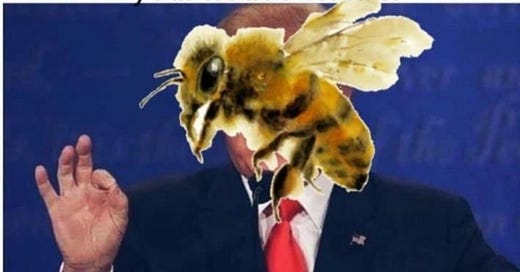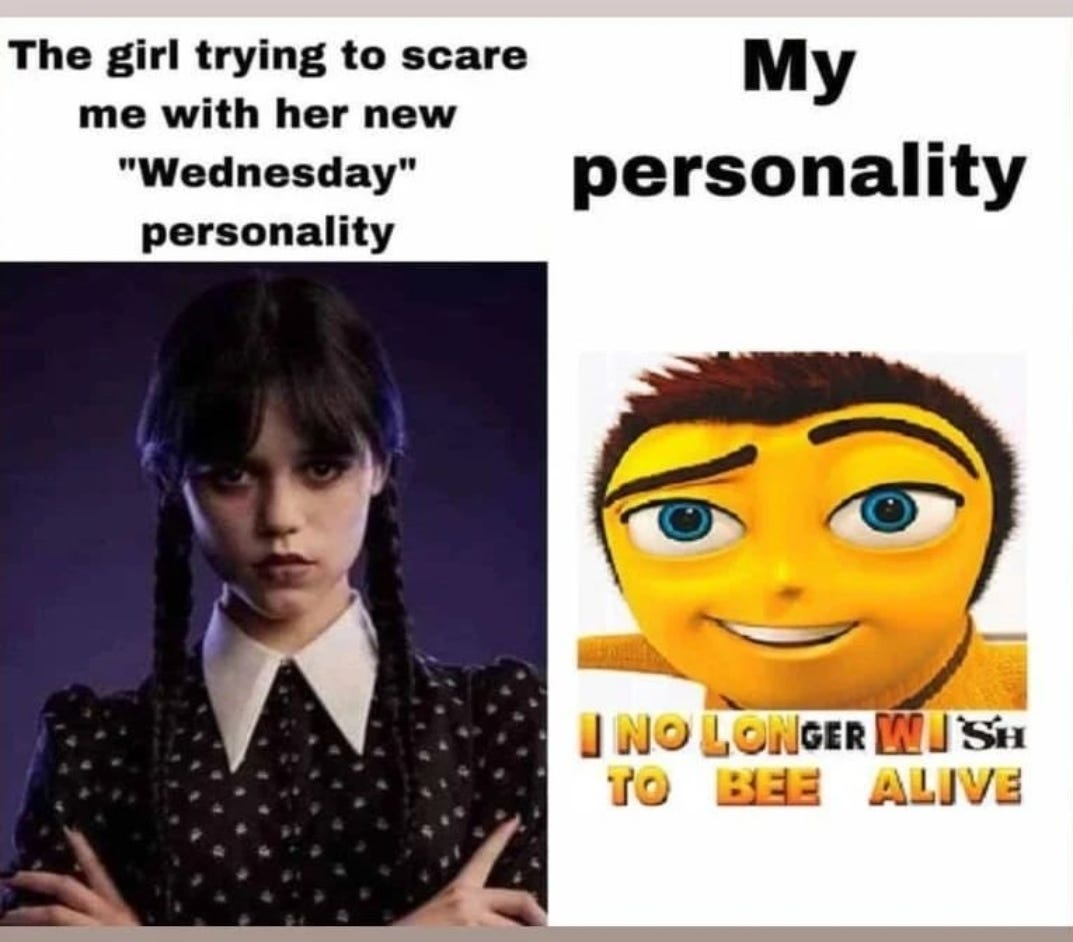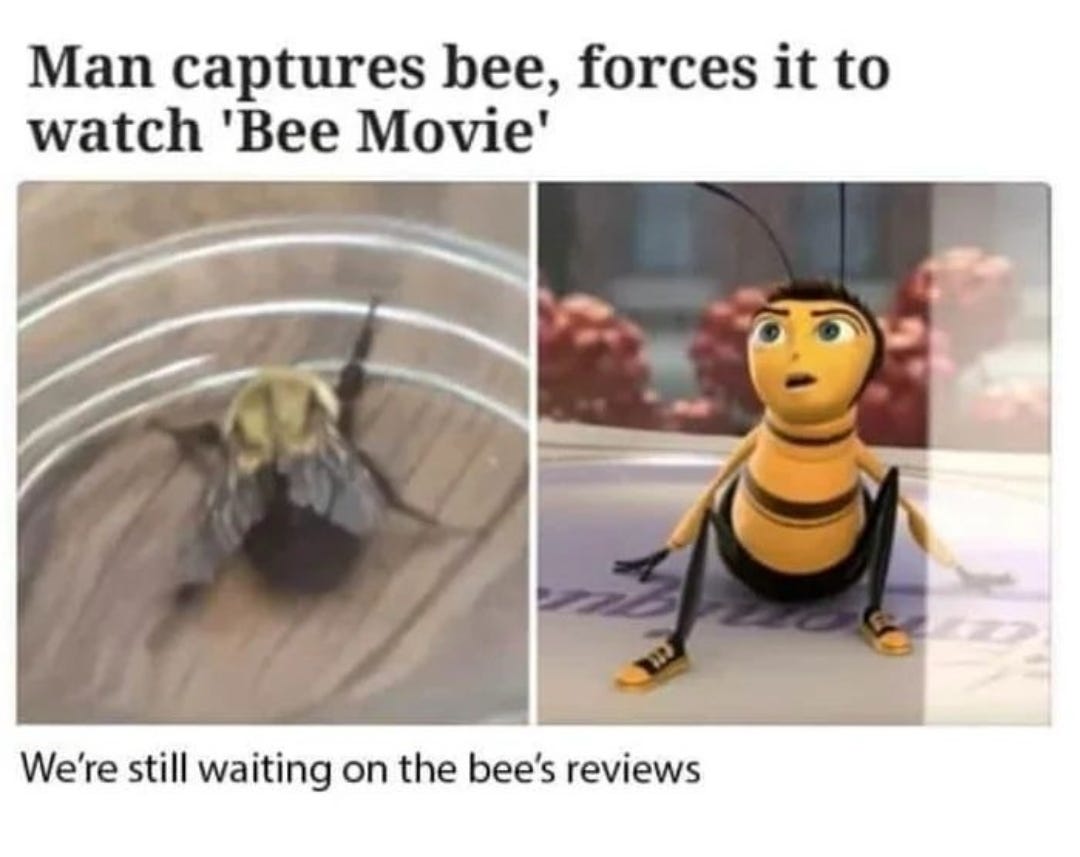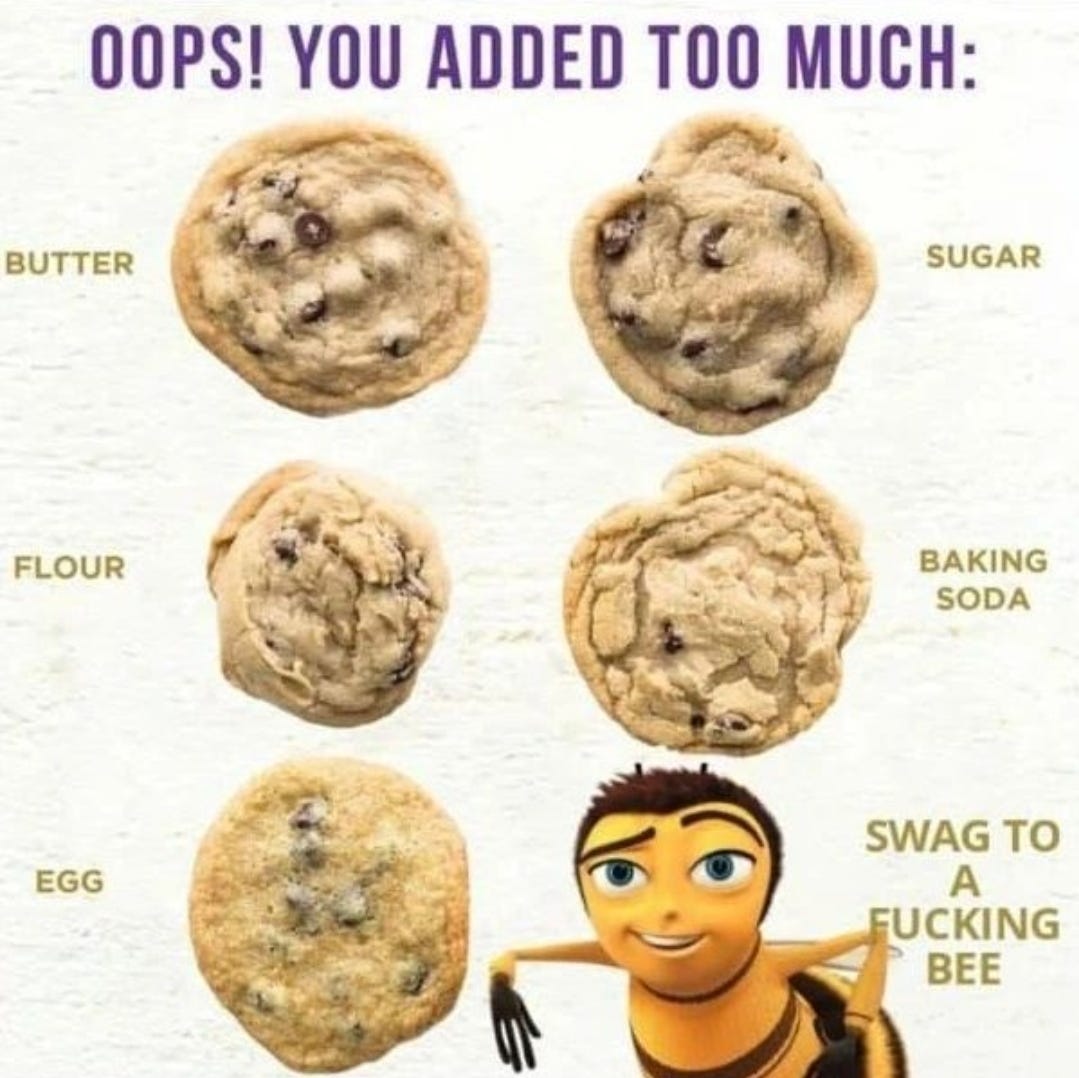Holistic Beekeeping 101: Deeper Dives into the World of Bees
A Basics Guide for the apis-curious
In the natural progression of homesteading and finding our way back to the land, the question of beekeeping inevitably arises. While there are many, many problems with modern beekeeping, and beekeeping in general (as we will discuss in future posts), that doesn’t mean that no one should keep bees— and more importantly, for those people who should choose to keep bees, that they should understand the context in which they keep them and what a beekeeping ethic should look like. And to do this, we need to fully understand what beekeeping is, how European honeybees survive in the world, and what historical conditions have allowed them to find a place within a greater ecological system.
Honeybees are a type of insect, a class of living creature that has three body parts, six legs, two antennae, and an exoskeleton made primarily of chitin. Further, bees are part of the order Hymenoptera, which includes sawflies, wasps, bees, and ants. More specifically, the family they are a part of is the apidae family, which consists of all bees, including bumble bees, honey bees, solitary bees, stingless bees, carpenter bees, and orchid bees. Their genus is Apis mellifera, which includes European and Western honeybees and includes over 7500 different species of bees.
It shouldn’t be surprising that there are that many; Insects make up the largest class of living things on Earth, with over a million identified species and plenty more. Now bees, specifically honeybees, are considered part of the most highly evolved social insects, described as "eusocial," meaning they live in groups and divide labor among members that specialize in certain tasks. Honey bees, ants, and wasps are all eusocial. Honey bees engage in complex communal behavior, including caring for their young, nest construction, common defense, and food foraging. In fact, bees are so reliant on one another that no individual bee can live for long on its own.
Despite it being based on their age, the bee’s life cycle is only about 45 days and occurs in 8 stages: It all starts with an egg. In a normally functioning hive, a queen will lay one egg per cell in the brood chamber— the brood chamber in the most common hive, Langstroth hives, are the bottom boxes— called mediums or deeps, depending on the size. Queens are able to choose whether to lay fertilized or unfertilized eggs. Due to the haploid/diploid nature of honey bee reproduction, unfertilized eggs result in male (drone) bees, while all fertilized eggs become female bees--either workers or virgin queens.
Workers in the hive will produce a number of drone cells, slightly larger in diameter than worker cells, usually placed around the edges of brood frames. The queen "measures" the cell and most of the time lays the appropriate egg in the corresponding cell. If she gets it wrong, the workers will eat the "mistake." At her peak of egg production, she may lay up to 1,500 eggs per day. The reason the drone—the male bees— are laid on the edges of the brood frames is that during a cold snap if some recently laid bees are going to die, the hive would rather it be the drones. Unlike the worker bees, they don’t harvest food, clean, or do any of the day-to-day important tasks.
After the queen lays an egg, on average, the egg will hatch on the third day, but that time can vary depending on temperature. The creature that emerges from the egg is a tiny, white, glistening, wormlike larva. For the first 2 days of life, all female larvae are fed "royal jelly," a special food secreted from glands located in the heads of nurse bees. Larvae that will become queens receive large amounts of royal jelly for their entire larval development period of 4 and a half days. After the second day, worker larvae receive brood food, also known as bee bread. After 5 and a half days of feeding, the worker larva has completed its larval development and begins to pupate.
Now the drone larvae are fed a similar diet, but in the drone article, we’ll talk a little bit deeper about this, for 6 days before their larval development phase is complete. At this time, workers in the hive will cap the cell of the mature larva to protect it while it undergoes its transformation. After its cell is sealed, the larva spins a cocoon around itself. It may not be apparent that honey bee larvae spin cocoons before they transform into pupae, because their cells are capped before the spinning begins and because the emerging pupae leave the cocoons behind.
Inside the cell, the smooth, wormlike larva undergoes a transformation in which its body changes into an insect with three distinct body parts, six legs, four wings, and fully functional compound eyes. On the twenty-first day, a newly transformed worker bee will chew its way out of its cell and climb onto the comb surface. Drones emerge after about 24 days, while queens take only 16 days.
Despite it taking less time for them, Queens are still larger and in some ways more developed than workers or drones. The reason they are able to complete their transformation more quickly is because of the richer diet they receive as larvae and because they are urgently needed in the colony.
Interestingly enough, some researchers who clearly had nothing else to do decided to feed drones and worker bees the Queen diet in the larval stage, and instead the bees had all sorts of problems, so it’s not a secret Queen sauce. Now, normally you won’t see queens being reared too often; it’s not something you accidentally have happen— and we will talk a bit later about what you’ll see if your hive is having problems with its queen. But, if the new bee is a queen, it will immediately seek out other competing queens and queen cells and attempt to kill them until only one remains.
Now, If your bee doesn’t win the lottery and is a simple worker, which is usually the case, it will begin to clean cells. If the bee is a drone, it basically won the lottery, and it will be fed by workers until it is able to feed itself and does very little else until it reaches full maturity, after about a week.
Bee Biology
If you’ve ever taken a second to actually look at a bee, you’ll notice that they have three body sections: The head, the thorax, and the abdomen. The thorax, the one you’re probably least familiar with, is probably most closely equivalent to a chest— it’s where a large portion of their mechanics stems from— their wings and legs— like our arms— are connected at this point.
The abdomen is its hindmost section and houses most of the bee’s internal organs, such as scent and wax glands, the digestive system, reproductive organs, the heart, and the stinger. The abdomen is composed of overlapping sections of the exoskeleton that can slide and expand to facilitate breathing and can change the shape of the bee for balance and aerodynamics, as well as stinging. When bees land on flowers, their hairs allow them to carry that pollen to other flowers of the same species and pollinate them. Honey bees also eat pollen. Nectar, comparatively, is basically like a simple carb for short-term energy and the pollen is more protein-rich than other stuff they need.
The Queen
At this point, we’re describing just the worker bees, those female bees who do basically everything but laying babies and mating with the queen. The queens are the largest bees; not freakishly large like you see in cartoons, but they do have long abdomens for obvious reasons and rarely leave the hive— only to mate. Queens typically live a few years but have been documented to live up to 8 years and release a pheromone so that the other bees recognize her. All she does is literally release eggs.
The royal jelly fed to the queen throughout her larval life and is primarily responsible for her development as a queen. Before being fed this special diet, a queen egg is identical to a worker egg. About a week after emerging from her cell, a new queen will leave the hive to mate. She flies to a drone congregating area some distance from her hive where drones from other hives wait for the opportunity to mate with a queen. Here she is unlikely to mate with drones from her own colony—nature's way of increasing genetic diversity. At least theoretically (again, we’ll be talking about this).
The queen will mate with like 12 drones in the air during each mating flight, which typically occurs over 2 to 4 days. She then immediately heads back to the hive. She will begin laying eggs in about 48 hours. If because of weather or other circumstances, she is not able to make her mating flight within 20 to 30 days, she will lose the ability to mate and will only be able to lay unfertilized eggs, which will all become drones. Since drones can't do much for a hive, this situation is unsustainable and the hive will eventually die off if a new viable queen is not introduced. Since drones don’t forage, the hive starves or swarms or tries to replace the queen.
Drones
So let’s talk drones. Looking rounder or stouter than workers, they have much larger heads than either queens or workers, and their compound eyes take up a larger percentage of their heads, meeting at the top. Drones have no wax glands, pollen baskets, or stings, and drones make up about 10-15% of your colony. First-time beekeepers will often get nervous that they have a bunch of queens forming in their hive and worry that they’re going to swarm, but it’s almost always just drones.
If there are 3 types of bees and there’s 1 queen and like 10% of the hive is drones, the remaining 90% are female worker bees— they’re underdeveloped females that cannot lay eggs. They do literally all of the work, from comb building to foraging to taking care of the queen and drones and larvae, and usually live a whopping 6 weeks, but during the winter can live up to 6 months.
Now this is all the barebones of beekeeping, and in the next beekeeping piece, we’ll dive a little bit deeper into this content before we explore all of these different parts of beekeeping in detail. What we’ll find is that much of the research done on beekeeping and the historical application of beekeeping is very different than how modern beekeeping is done, and that despite knowing better, we have been unable to adapt our management practices because of economic incentives.
Beekeeping has become a polarizing concept, given the ecological destruction taking place; it is viewed as a tool for urban folks to reconnect with ecologies while also being pointed out for being a practice for rich snobs to produce absurd amounts of honey simply for Instagram branding, while destroying the landscape for native pollinators. We’ll be talking about all of this and what the evidence actually suggests.
If you’ve enjoyed this piece, which is equal to a 7-page chapter, of (so far) a 726 page book with 368 sources, you can support our work in a number of ways. The first is by sharing this article with folks you think would find it interesting. Second, you can listen to the audio version of this episode, #139, of the Poor Proles Almanac wherever you get your podcasts. If you’d like to financially support the project, and get exclusive access to our limited paywalled content, you can become a paid subscriber on Substack or Patreon, which will both give you access to the paywalled content and in the case of Patreon, early access to the audio episodes as well.







